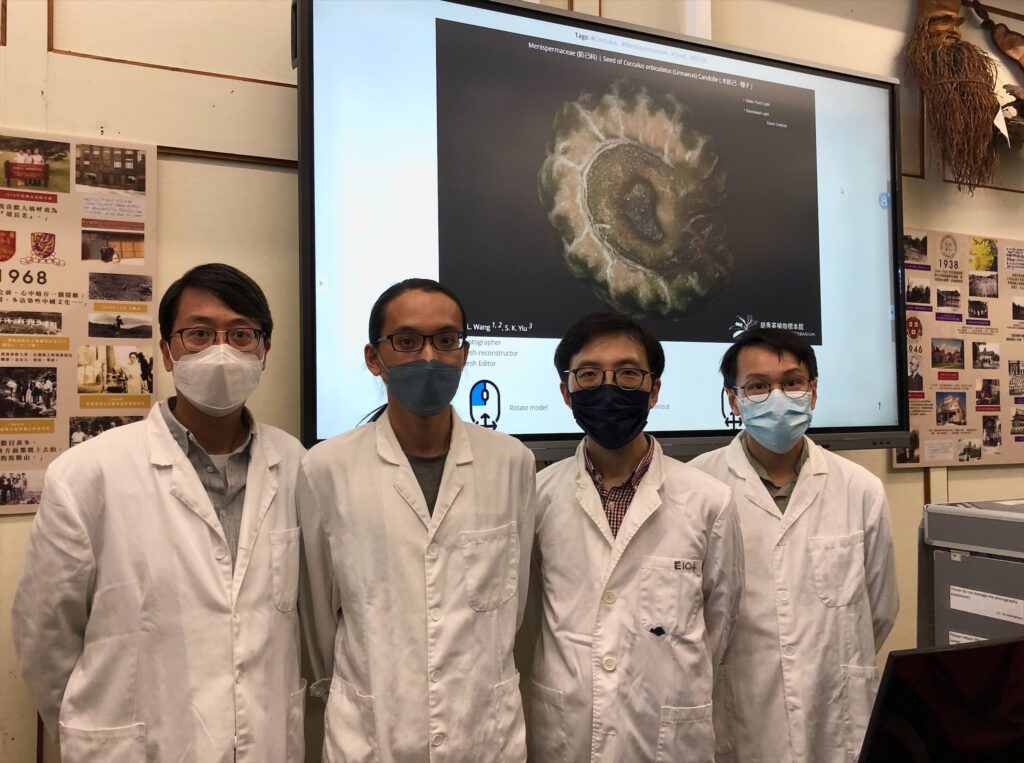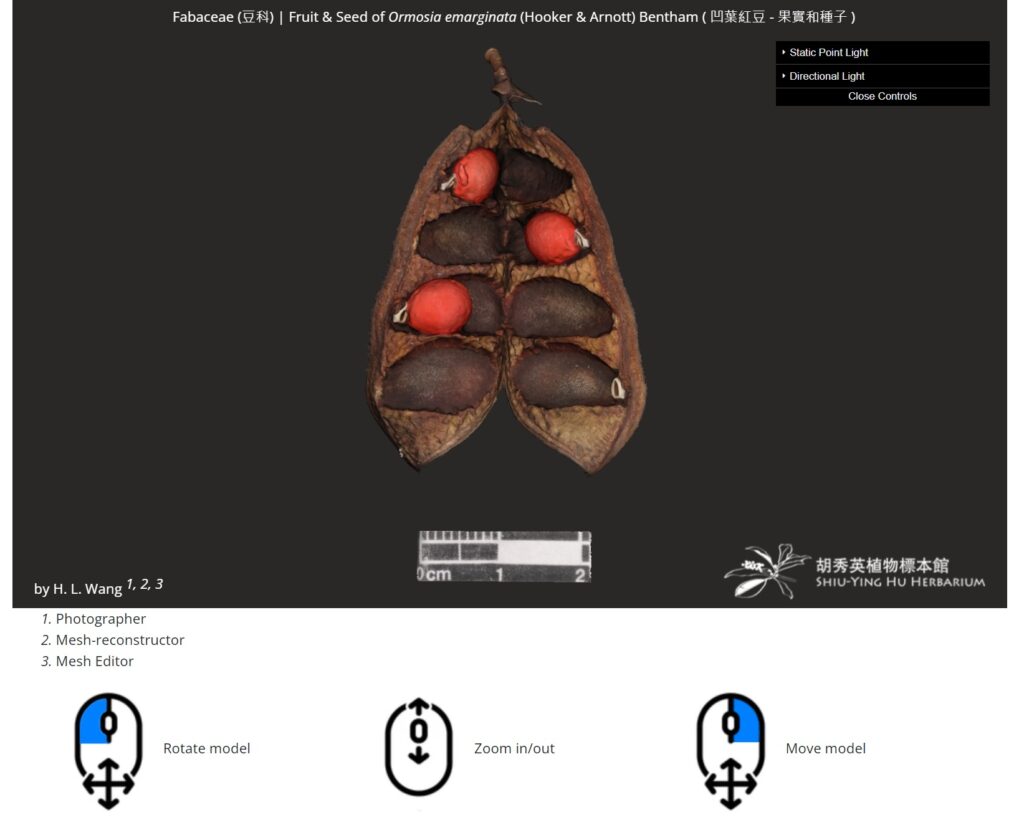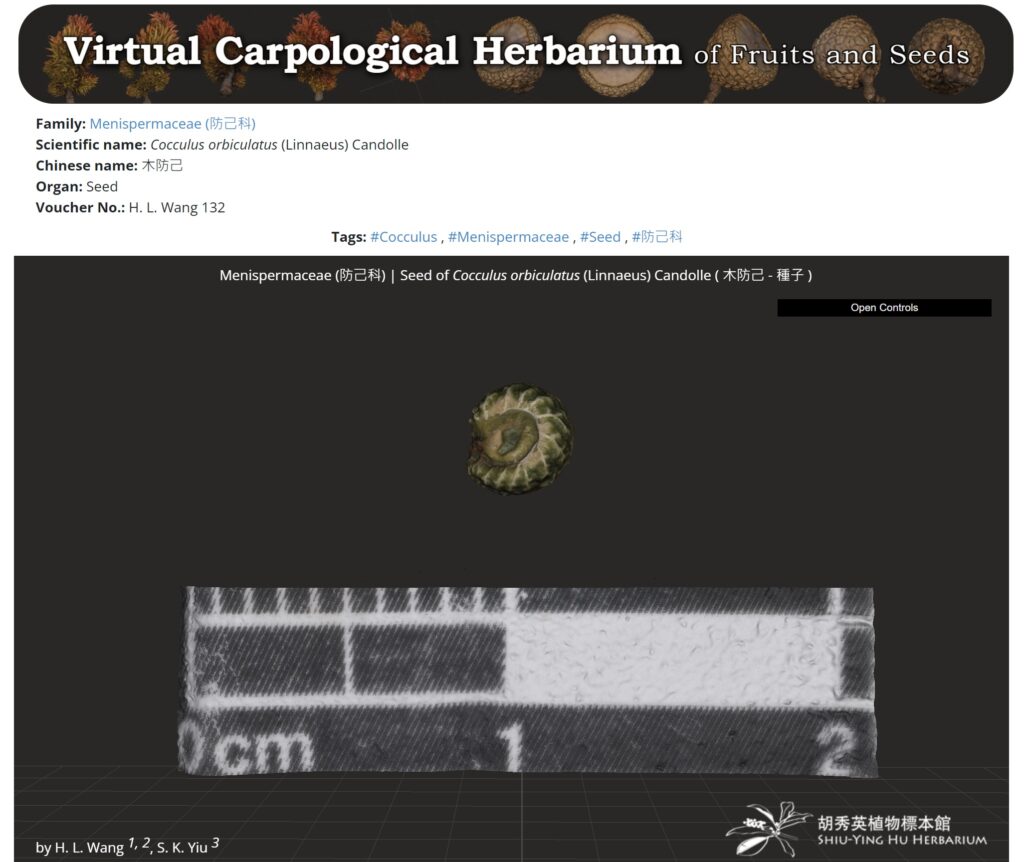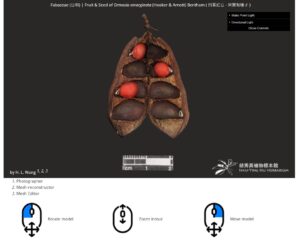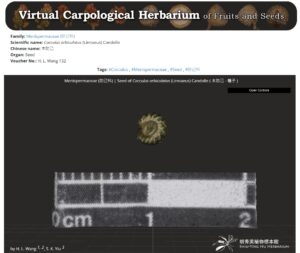CUHK
News Centre
CUHK School of Life Sciences’ Shiu-Ying Hu Herbarium launches a Virtual Carpological Herbarium of Fruits and Seeds
The Shiu-Ying Hu Herbarium of the School of Life Sciences at The Chinese University of Hong Kong (CUHK) has established an innovative database, the Virtual Carpological Herbarium of Fruits and Seeds. By combining plant taxonomy and photogrammetry, researchers reconstructed more than 300 plant specimens into 3D models that reflect their genuine structures, sizes and colours. The database will provide an insightful reference for native plant identification, ecological survey, and conservation of rare and endangered species. The research methodology and results were published in the scientific journal PLOS ONE.
Curator of the Shiu-Ying Hu Herbarium Dr David Lau Tai-wai and his research team spent two years building 3D models of more than 300 plant species, including about 200 native species. Each 3D model was reconstructed according to an authenticated voucher plant specimen using the “structure-from-motion” technique, which required taking 90 to 100 photographs per specimen, and conducting rigorous comparisons with identified species in order to ensure accuracy.
The database is now available online for researchers and the public to view the 3D plant models on computers and mobile devices without additional software. The 3D models can be rotated through 360° and magnified to observe the structures and fine details. The high resolution allows users to inspect macroscopic features smaller than 1 mm such as close-up textures of leaves and seeds, much like seeing the real specimens.
Dr Lau said, “These 3D models are extremely valuable for scientific research and citation. The authenticated voucher plant specimens will be permanently stored in the archives of the Shiu-Ying Hu Herbarium. In the future, more native plant specimens will be included in the database. This project demonstrated the feasibility of applying advanced technologies in botanical research. It not only facilitates identification of plant varieties and endangered species, but also contributes to STEAM education. We have published the methodology for creating these 3D models, and we hope to set an example for other botanists and herbaria to establish their own 3D databases.”
Other team members from the Shiu-Ying Hu Herbarium include first author of the publication and researcher Mr Wang Ho-lam, education manager Mr Wong Tin-hang, and researchers Mr Chan Yiu-man and Mr Cheng Yat-sum. To explore the 3D models, please visit: https://syhuherbarium.sls.cuhk.edu.hk/collections/3d-specimen/.
The full research article is available at https://doi.org/10.1371/journal.pone.0270199.
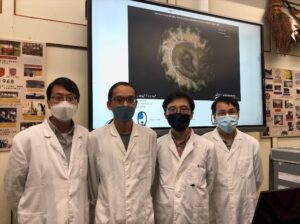
Research team members from the CUHK’s Shiu-Ying Hu Herbarium. (From left) Curator Dr David Lau Tai-wai; first author of the publication and researcher Mr Wang Ho-lam; education manager Mr Wong Tin-hang, and researcher Mr Chan Yiu-man.


